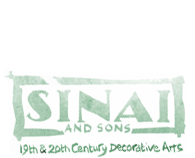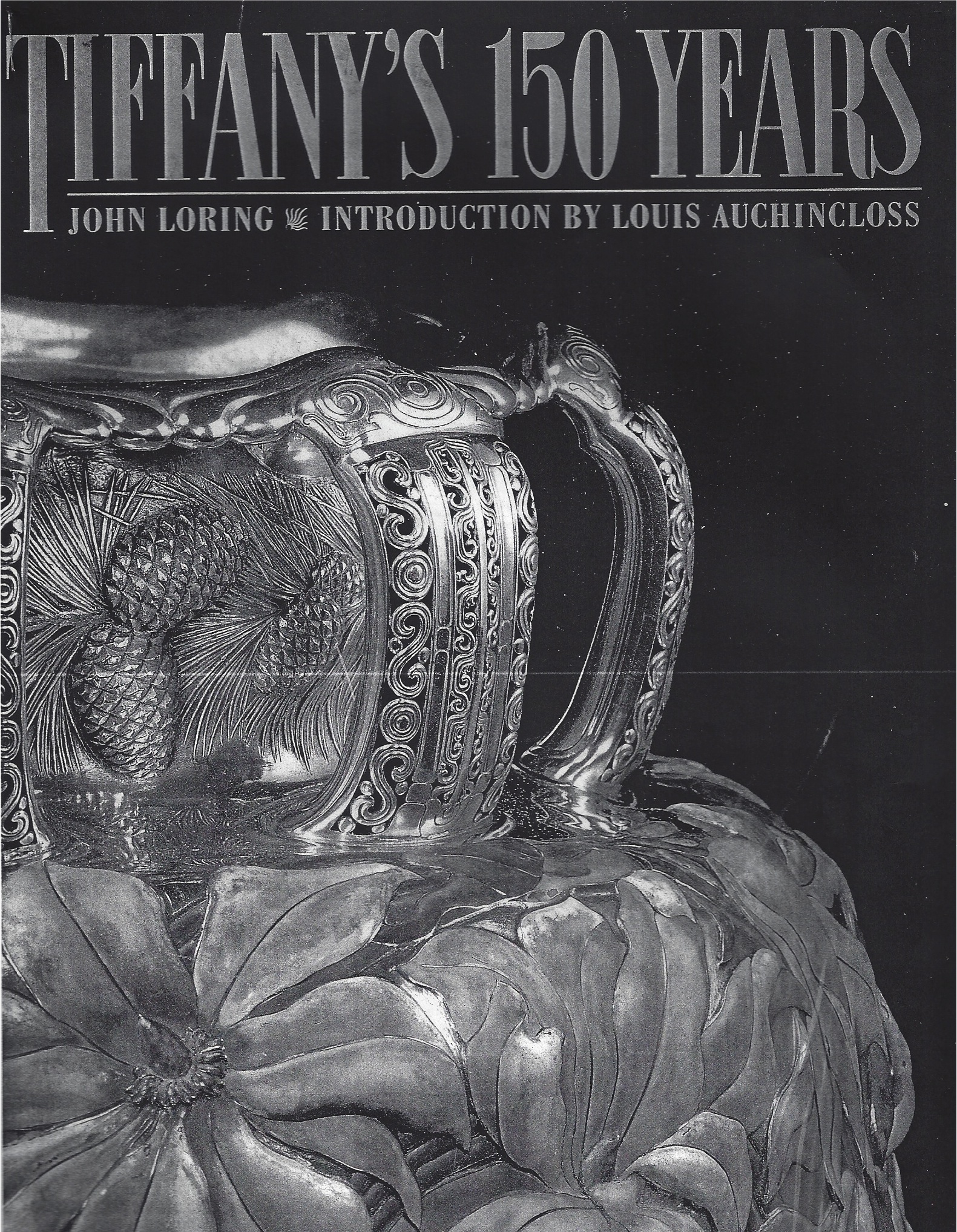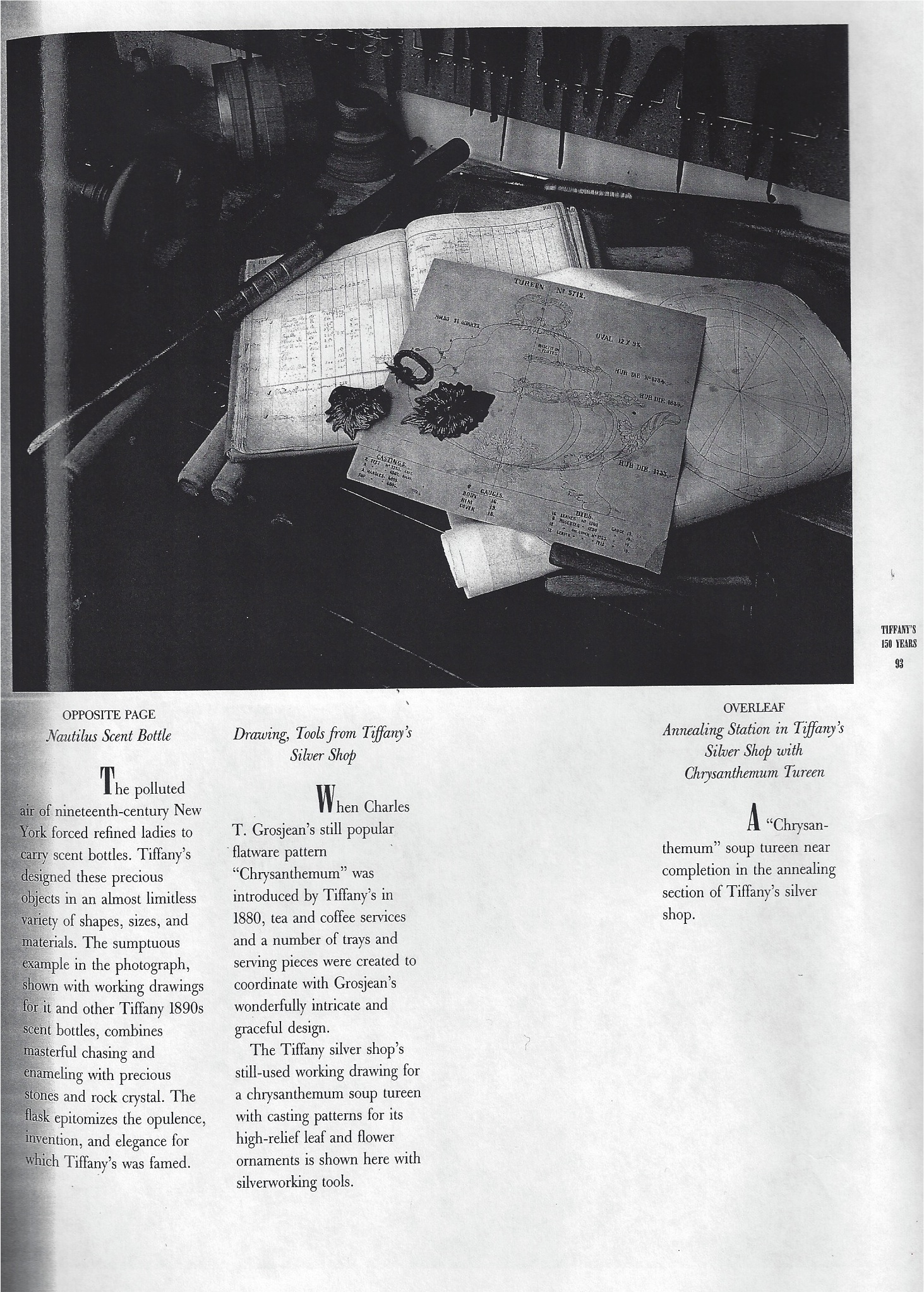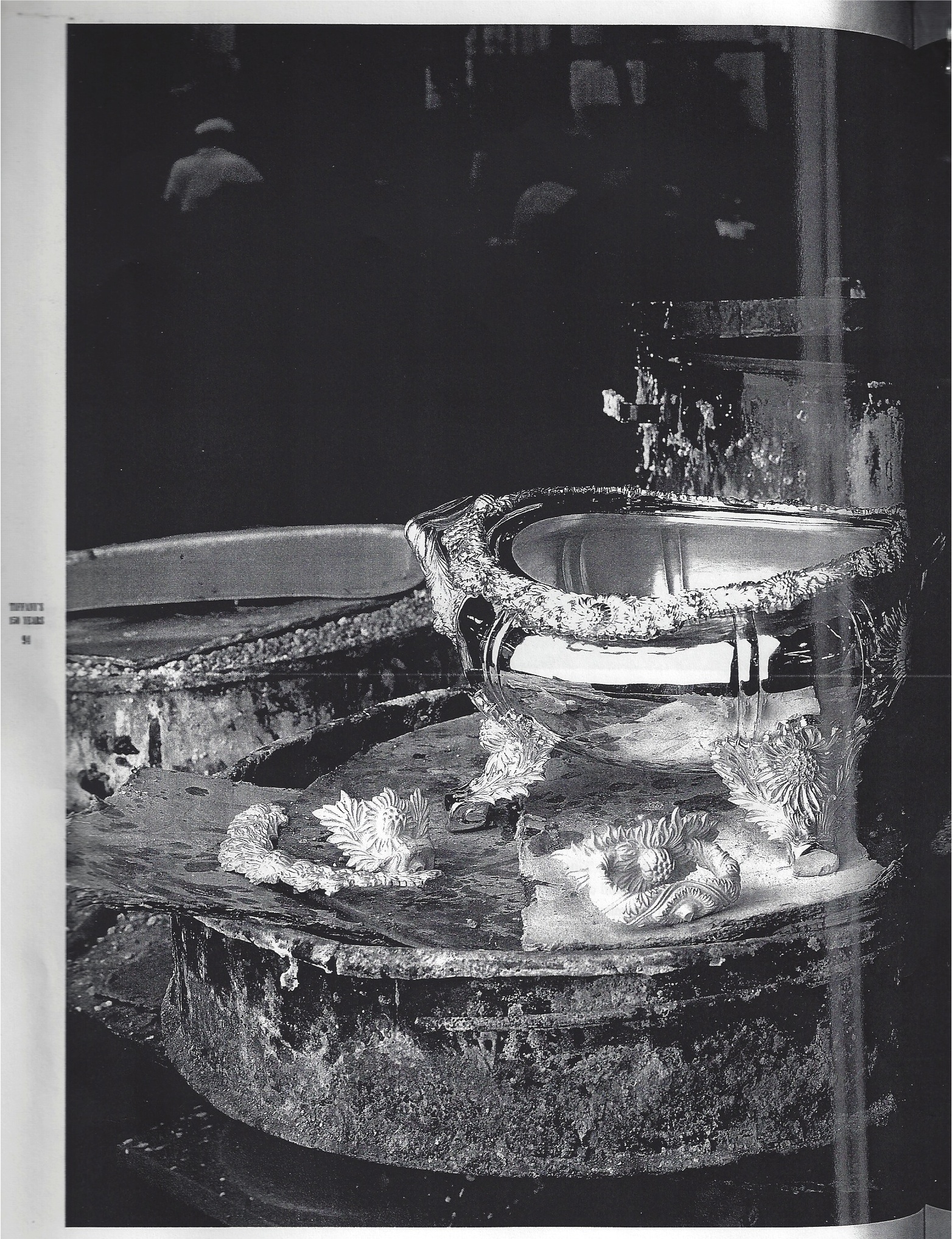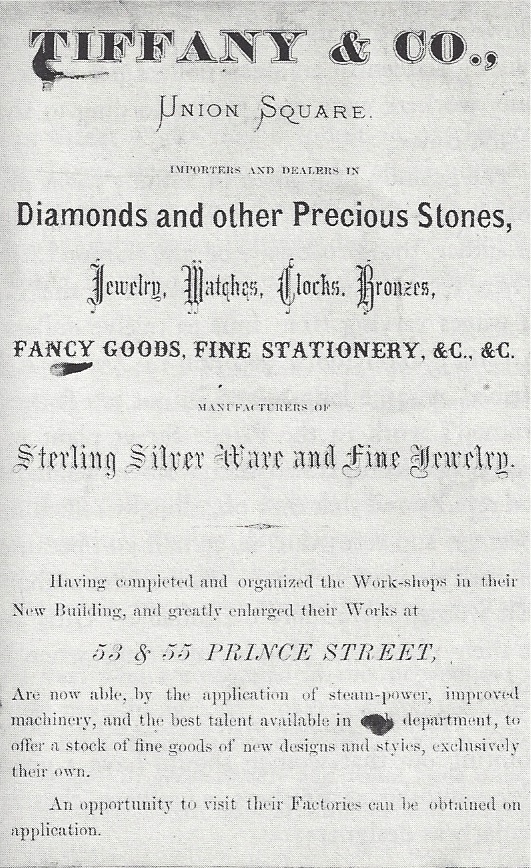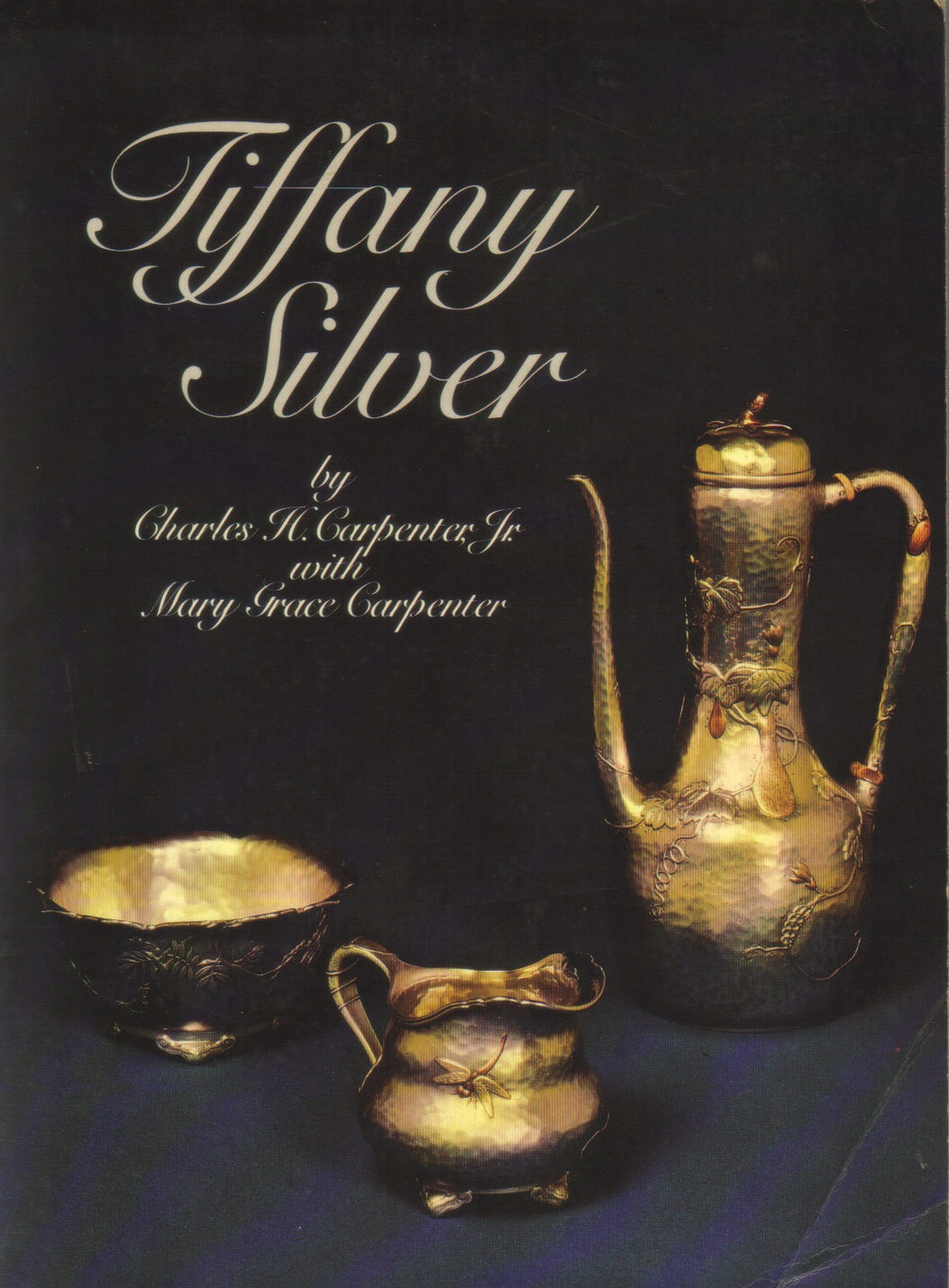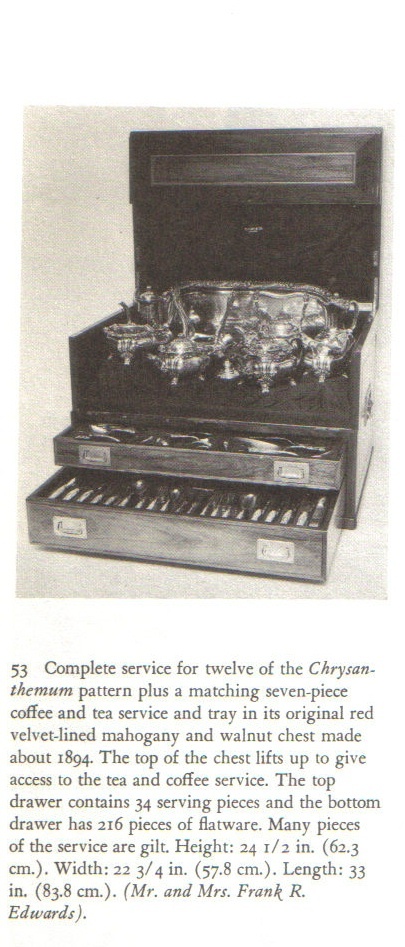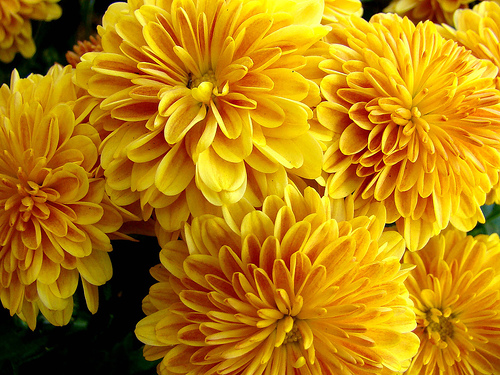A Six Piece Silver Chrysanthemum Pattern Tea and Coffee Service and Matching Tray
By Tiffany & Co., circa 1873
Comprising a kettle-on-stand, coffee pot, covered sugar bowl, cream jug and waste bowl, each faceted globular, on four feet, with chrysanthemum borders, together with a two handled tray with conforming decoration, in the original walnut presentation case with keys, each piece stamped on the base TIFFANY & CO. MAKERS STERLING SILVER M and numbers
The kettle on stand: 11 ¼ in (28.5 cm) high
The tray: 30 ¼ in (76.8 cm) long
The presentation case: 17 in (43 cm) high, 32 in (82 cm) wide, 22 ¾ in (58 cm) deep
Gross weight: 437 oz (13,585 gr)
cf. Charles H. Carpenter, Jr., Tiffany Silver, p.56, fig.53, p.78, fig.76
John Loring, Tiffany's 150 Years, 1987, pp.93-94
The kettle on stand: 11 ¼ in (28.5 cm) high
The tray: 30 ¼ in (76.8 cm) long
The presentation case: 17 in (43 cm) high, 32 in (82 cm) wide, 22 ¾ in (58 cm) deep
Gross weight: 437 oz (13,585 gr)
cf. Charles H. Carpenter, Jr., Tiffany Silver, p.56, fig.53, p.78, fig.76
John Loring, Tiffany's 150 Years, 1987, pp.93-94
When Charles T. Grosjean's popular flatware pattern, 'Chrysanthemum', was introduced by Tiffany in 1880, tea and coffee services and a number of trays, like this one, were created to coordinate with Grosjean's wonderfully intricate and graceful design. Grosjean came from a silversmithing family and his father supplied Tiffany & Co. with silverware from the early 1850s until his untimely death from consumption in 1865. After his father's death, Charles Grosjean took over the silver business but was unable to manage it successfully so the remaining assets were sold in 1866 to a New York silversmith of Dutch descent, William Bogert. Grosjean then joined Tiffany in 1869. In 1878 Grosjean originated his best-known design, 'Chrysanthemum', with its radiant flowering heads and undulating leaves. Photographs in the Tiffany archives indicate that a serving spoon and a pair of sauceboats were shown at the Paris Exposition of 1878, and that Grosjean was granted U.S. Patent No. 11968 on September 21st 1880.
This was one of the most expensive die-made patterns ever created by Tiffany & Co., requiring an extensive amount of handwork to complete. From the very beginning, it was so popular that Grosjean turned his attention to creating spectacular pieces of hollow-ware to complement the flatware, including elaborate tea sets. The higher labour involvement, exceptional weight and intricate design meant that Chrysanthemum was available only to Tiffany's wealthiest clients. The average tea service consisted of seven pieces and rarely included a tray. Only the largest sets included a hot water kettle and stand, at substantial extra cost. In its most basic form, the average tea service, weighing less than 290 ounces with no tray, would have sold for more than $1,800 in 1891, an enormous sum of money for that time.
It is a testament to the superb quality of the service that in 1914 the Congress of the United States of America chose a Chrysanthemum pattern tea and coffee service as a wedding present for President Woodrow Wilson's youngest daughter.
This was one of the most expensive die-made patterns ever created by Tiffany & Co., requiring an extensive amount of handwork to complete. From the very beginning, it was so popular that Grosjean turned his attention to creating spectacular pieces of hollow-ware to complement the flatware, including elaborate tea sets. The higher labour involvement, exceptional weight and intricate design meant that Chrysanthemum was available only to Tiffany's wealthiest clients. The average tea service consisted of seven pieces and rarely included a tray. Only the largest sets included a hot water kettle and stand, at substantial extra cost. In its most basic form, the average tea service, weighing less than 290 ounces with no tray, would have sold for more than $1,800 in 1891, an enormous sum of money for that time.
It is a testament to the superb quality of the service that in 1914 the Congress of the United States of America chose a Chrysanthemum pattern tea and coffee service as a wedding present for President Woodrow Wilson's youngest daughter.
